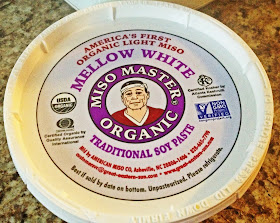No amount of women I've talked with, books I have read, or information I have researched has prepared me for this emotional side of breastfeeding.
Before I became pregnant, I always said I would use formula (they wouldn't sell it if it wasn't just as good, right? Wrong!). Once I became pregnant, I said I would breastfeed for the first 3 months. Three months turned into six months, six months turned into one year, and one year turned into where we are today.
For me, now felt like the right time. Yet with making this decision came immense guilt, anxiety, and sadness. The first 3 days seemed to be the worst. I kept her morning (right out of bed) and night time (right before bed) feedings, and cut out the two middle of the day feedings. Nya was used to nursing before her nap, and having to tell her "There's no more milk right now" as she asked and cried for it broke my heart.
The first 3 days of nap time were the roughest. She screamed off and on for the first five minutes, before settling down and falling asleep. That first day I watched her cry on the monitor, I felt like the worst mother in the world. (I had been putting Nya down for naps awake since she was 5 months old - we didn't nurse or rock to sleep first - so I knew her crying was over not getting breast milk.) How can I deny my baby what she's wanting and needing? But after those five minutes, as I watched her fall asleep, I felt proud, determined, and overwhelmingly sad all at the same time.
In that moment, I realized....
She doesn't need me as much anymore.
She's growing up.
She's no longer my little baby.
And the questions, even now, continue to control my thoughts...
Am I weaning her too soon?
Should I go off her cue?
Am I taking away her nutrients and how her body will best absorb those nutrients?
Am I not providing her with the most optimal health?
Will this weaken her immune system?
The first two years of life are the most important developmentally...Should I wait?
How do I say no when she's asking for milk?
What has helped me...
Allowing myself to feel these feelings...
Your body will go through a lot of hormonal changes when it stops producing milk. It can cause depression if not dealt with. Realize your feelings are normal!
Dealing with the situation head on and explaining to Nya, "there's no milk now"...
Avoiding the issue, especially when your little one is asking for it, does not help ease their fears or comfort. Taking the time to explain, while offering love, allows them to feel supported during this difficult transition.
Distraction, distraction, distraction...
Sometimes offering food, water, or an activity in place of nursing when your little one is asking for milk, helps to take their mind off the situation. This does not mean avoid it altogether. But sitting and wallowing on the fact that there's no milk is not productive either, and their minds can easily shift gears at this young age.
I wanted to write this to share my struggle and journey, in hopes that it may help someone going through the same situation. Ultimately, the decision is yours, and one that you have to feel is right for you and your baby. Western Society has a funny way to turn the natural way of life into something that seems barbaric, "alternative", and lacking progress. Follow your gut.
For now, this is the right decision for me and Nya. We are working on weaning completely, but it is a gradual process, and will happen when it needs to happen.
Each day does get easier. Slowly, your hormones do begin to balance. And they will always be your little baby, no matter how old they get.
To connect with others in this crazy journey of life, discover new parenting ideas & fun DIY projects, learn about holistic remedies, & find whole food plant based recipes, please visit our Facebook page Loving Green at Loving Green FB.















